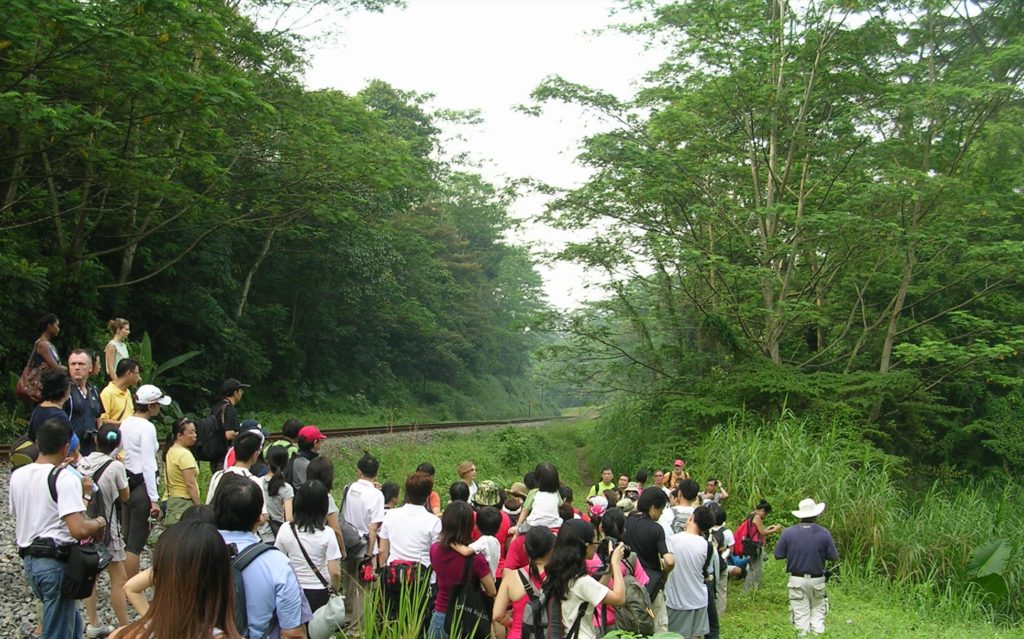
The environmental movement in Singapore can be roughly categorised into 4 time periods:
- Before 2000: Conservation and Protection
- 2000-2010: The Golden Age
- 2010-2015: One Step Forward, 2 Steps Back
- 2015-2020: Rise of the Youth
Before 2000: Conservation and Protection
The focus by NGOs before 2000 was on environmental protection and nature conservation. Most of the efforts in pollution control and creating green spaces were done by the government.
Before 2000, there were 2 main environmental NGOs – Nature Society (Singapore) (NSS) and Singapore Environment Council (SEC). NSS focused on the green issues and were active in nature conservation, including advocating for Sungei Buloh and preventing the building of golf courses at Lower Pierce Reservoir. SEC focused on the brown issues, including waste reduction and recycling, green product labelling, and organising environmental activities and education.
2000-2010: The Golden Age
The period between 2000 to 2010 was perhaps the golden age of the environmental movement in Singapore. There was a proliferation of environmental NGOs and activism sprouting in Singapore, such as the Animal Concerns Research and Education Society, Waterways Watch, ECO Singapore, Vegetarian Society, Green Drinks, and Ground-Up Initiative.
The Chek Jawa saga in 2001 sparked off interest in our marine ecosystem and saw various nature and marine groups and activists emerging, such as Wildsingapore, Toddycats, Blue Water Volunteers, Hantu Bloggers, and many other nature bloggers and groups.
This period also saw various green policies and programmes started by the government, including the National Recycling Programme, the Energy Efficiency Promotion Office, BCA Green Mark for green buildings, NEWater and Water Wally by PUB, and the Community in Bloom programme by NParks.
Singapore published its Singapore Green Plan 2012 in 2002, and the Sustainable Singapore Blueprint in 2009 to guide our journey towards sustainable development. In 2006 and 2007, Al Gore’s efforts on climate change and the IPCC reports sparked off global and local efforts on climate change. Singapore published its first National Climate Change Strategy in 2008.
There were also major environmental events organised by the government such as the Singapore International Water Week, Singapore International Energy Week, World Cities Summit, and Singapore Green Building Week.
2010-2015: One Step Forward, 2 Steps Back
After 2010, there were more international environmental NGOs setting up in Singapore, such as WWF, Earth Hour, Conservation International, Wildlife Conservation Society, Marine Stewardship Council, and Forum for the Future. This was partly due to EDB’s efforts in positioning Singapore as a hub for international NGOs.
There were also new NGOs and informal groups being set up to advocate environmental causes such as waste and haze, and other issues such as heritage and food. These groups include Zero Waste SG, People’s Movement to Stop Haze, Love our MacRitchie Forest, Edible Gardens, and various groups supporting the Green Corridor and Bukit Brown.
The government continued its environmental efforts that were implemented from 2000 to 2010. EDB started to position Singapore as a living lab to encourage companies to use Singapore as a testbed for green solutions and technologies.
While the environmental movement shifted one step forward in Singapore, in some cases it was also moving 2 steps back. For example, Singapore allowed operations of a coal-fired plant in 2012, which some industry players and environmentalists questioned. The government published the Population White Paper in 2013, which triggered concerns on the increase in population and the strain on land and resources. Citizens signed petition after petition to try to save nature and forested areas from development, including Bukit Brown, Dairy Farm Estate, Pasir Ris Greenbelt, and Limau Estate Woodlands, without much success.
In 2013, LTA announced plans to build the Cross Island Line, a MRT line that would cut across the Central Catchment Nature Reserve. The nature groups and environmentalists were concerned about the environmental impacts of the line crossing the legally protected Nature Reserve.
2015-2020: Rise of the Youth
The last 5 years have seen more informal, yet organised, movements by the youth in Singapore, who are more well-versed in using social media and curating larger events to spread environmental awareness. Groups and events include Singapore Youth for Climate Action, LepakInSG, EarthFest, Singapore Eco Film Festival, Green is the New Black, and SG Climate Rally.
The government declared 2018 as the Year of Climate Action and 2019 as the Year Towards Zero Waste, with various initiatives and events co-organised with youth and community groups.
The SG Climate Rally held in 2019 at Hong Lim Park was the largest environmental related event to be held at the park, organised by a group of youth wanting the government to take bolder and faster action to tackle climate change.
2020 and Beyond
What would the next period of environmental movement in Singapore look like? Share your thoughts.

2 thoughts on “A Rough Guide to the Environmental Movement in Singapore from 2000 to 2020”